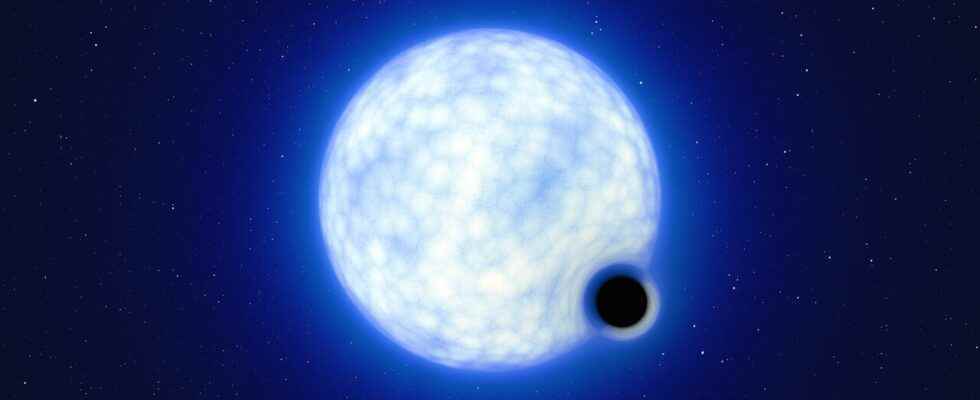Using data from the Very Large Telescope, a scientific team has shown that a giant blue star orbits with a “dormant” black hole. A first outside the Milky Way, which reinforces the idea that many stars at the end of their life can collapse into a very discreet black hole.
But also a puzzle to prove that it is indeed a black hole.
Galactic hide and seek
This discovery is the equivalent of “finding a needle in a haystack”, in the words of the study’s lead author, researcher Tomer Shenar (University of KU Leuven, Belgium). However, the latter was indeed looking for stars in the Large Magellanic Cloud accompanied by “dormant” black holes!
He and his team patiently studied 1,000 stars going back through Very Large Telescope datasets (at ESO, Chile) to 2008. Until they found VFTS 243, a giant blue star, minus 25 solar masses… which exhibited movements proving that it had a mate. Except it couldn’t be a planet and there was no trace of another star. So, a black hole?
The team did not rush to this conclusion: T. Shenar and his team are generally among the skeptics, who tend to prove that some “big discoveries” are not. They were therefore patient, and called on other researchers.
A very careful team
By better characterizing the spectrum of the blue star, they were able to refine the identification of its companion. Which could not ultimately be a red or brown dwarf, nor a helium (blue) star, nor two small stars… but the team checked anyway by setting up simulations. A job that took six years!
It should be noted that a so-called “dormant” black hole is not easy to identify: it emits very few X-rays and may not even go through a supernova explosion, the star undergoing a collapse direct. There is still debate on this last point, as it is a recent field in which scientists still face some unknowns. Still, this black hole can only be noticed thanks to a possible companion, as in the case of VFTS 243!
A common event?
For astrophysicists, this discovery in a galaxy other than the Milky Way could lead to reconsidering the different end-of-life scenarios for stars. Indeed, this collapse could be common (or perhaps common for the largest stars)… but to prove it, we will have to find other examples of dormant black holes! The hunt is on.
Source : Sky and Telescope

0